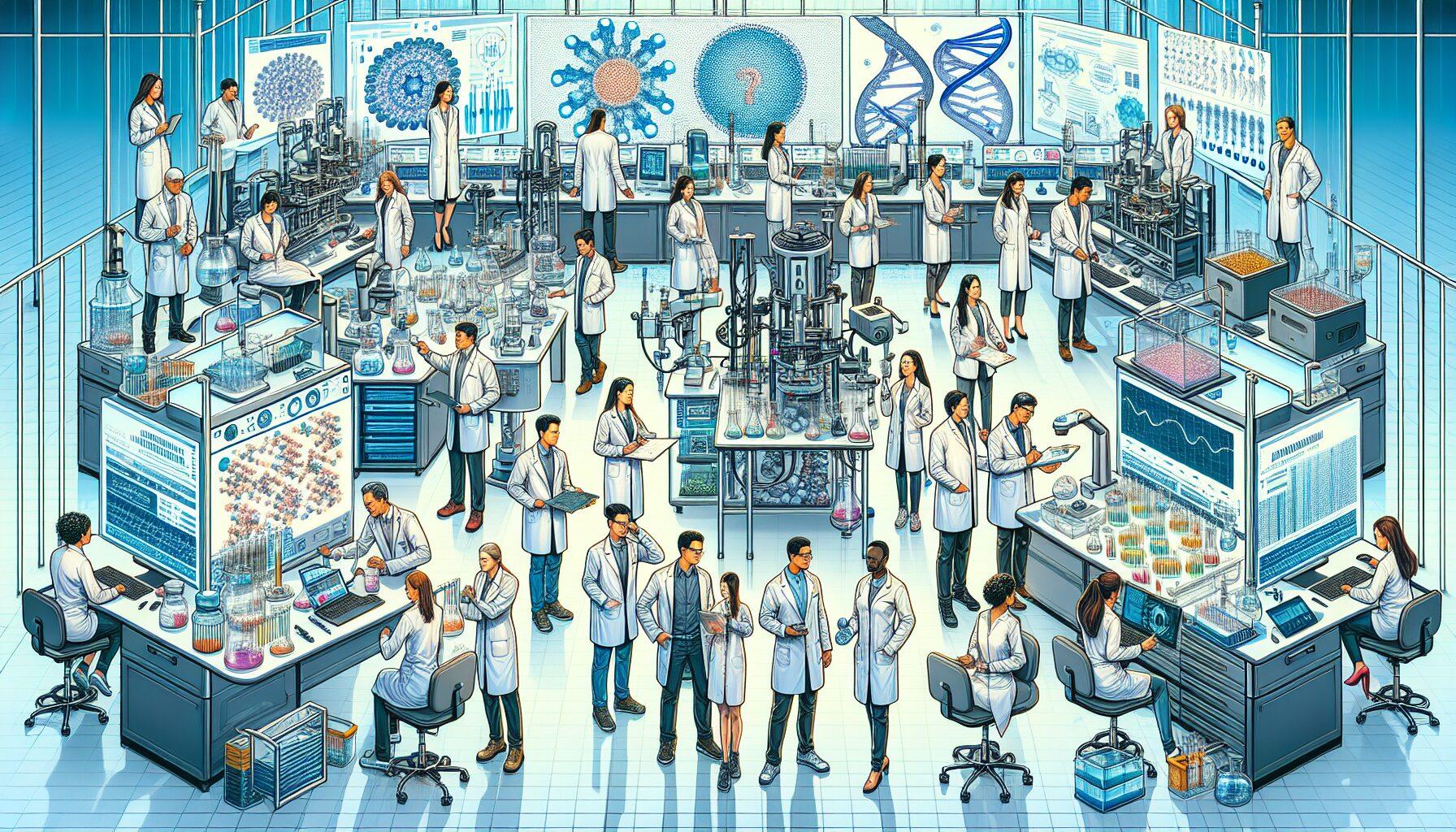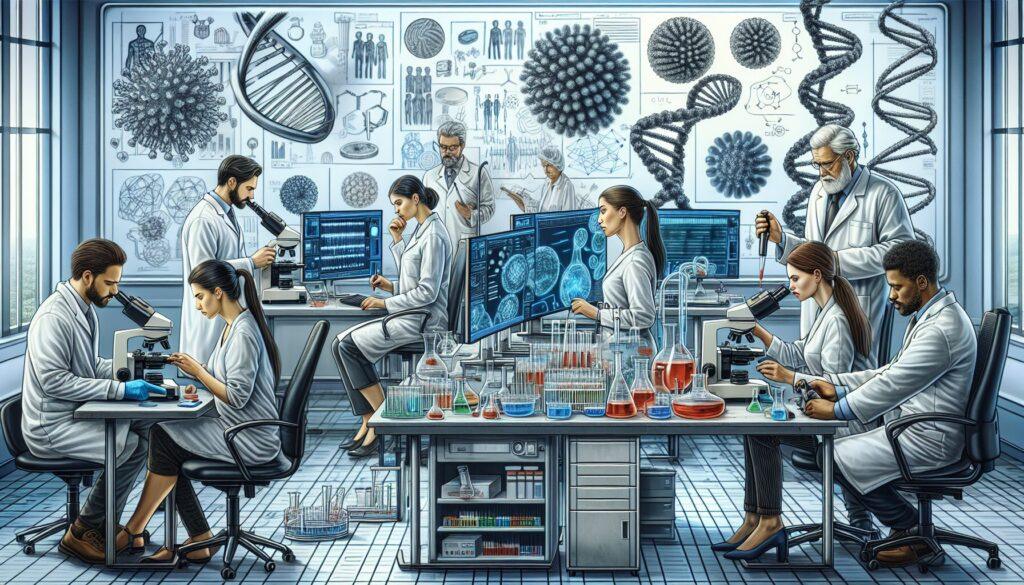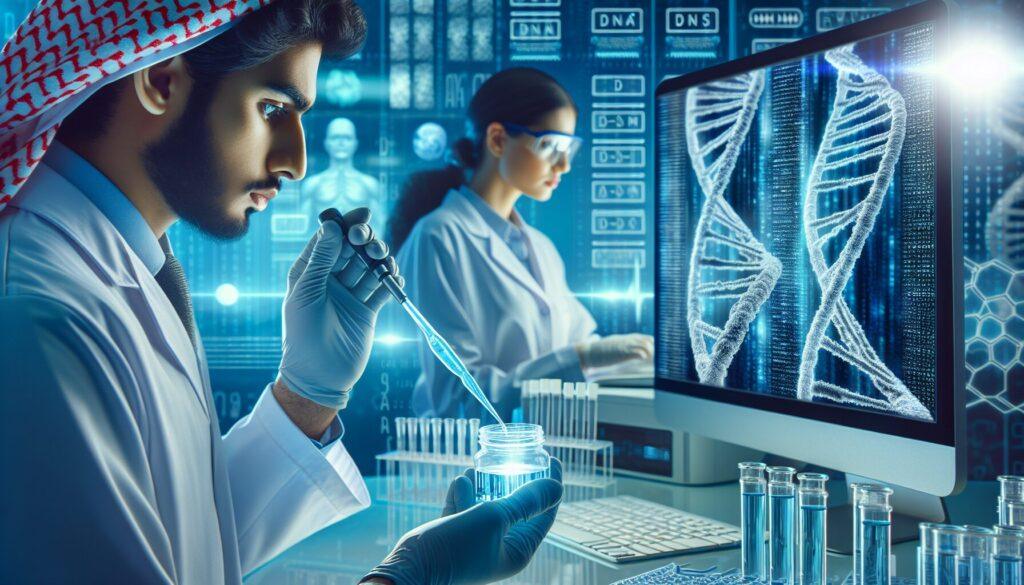Genetic Editing in 2025
As we venture deeper into the year 2025, the realm of genetic editing is experiencing a paradigm shift, transcending beyond mere therapeutic interventions to the cusp of personalized genetic enhancement.
The once controversial CRISPR-Cas9 technology has been refined to a degree of precision that allows for the targeted alteration of DNA sequences with minimal off-target effects.
This advancement is not only revolutionizing the treatment of genetic disorders but is also paving the way for bespoke genetic modifications tailored to individual desires and needs, promising a future where personalized genetics could become as commonplace as personalized medicine is today.
Genetic enhancement has evolved from a niche scientific pursuit to a transformative force in medicine, agriculture, and biotechnology. By 2025, groundbreaking advancements are reshaping possibilities, with CRISPR, base editing, and prime editing leading the way. As ethical debates intensify and regulatory frameworks evolve, professionals must stay informed about the latest developments, opportunities, and challenges.
The Evolution of Genetic Editing

Breakthroughs in Gene Editing Technologies
1: CRISPR-Cas9 Advancements: 2: Prime Editing’s Precision: Building on the power of CRISPR-Cas9, prime editing has emerged as a revolutionary technique that offers even greater precision. This method allows for the direct writing of new genetic information into a specified DNA site, without the double-strand breaks typically associated with CRISPR.
As a result, prime editing minimizes unintended edits and has the potential to correct up to 89% of known genetic variants associated with human diseases, heralding a new era of genetic medicine with fewer risks and more predictable outcomes. Improved precision and diminished off-target results.
2: Base Editing & Prime Editing: Building on the revolutionary CRISPR-Cas9 technology, base editing and prime editing represent significant advancements in the field of gene editing. Base editors, which allow for the direct, irreversible conversion of one DNA base into another without inducing a double-strand break, offer a more targeted approach to modifying the genome.
Meanwhile, prime editing, often referred to as a “search and replace” function for DNA, extends the capabilities of genome editing by enabling precise insertions, deletions, and all possible base-to-base conversions. These techniques enhance the toolkit of genetic engineers, promising to address a broader range of genetic issues with unprecedented accuracy. More correct corrections of single mutations.
3: AI-Powered Genetic Engineering: The integration of artificial intelligence into the field of genetic engineering marks a significant leap forward in our ability to analyze complex genetic data swiftly and accurately. AI algorithms can predict the outcomes of gene editing with remarkable precision, thereby reducing the potential for unintended consequences that have historically been a concern in gene therapy.
Furthermore, AI’s capacity to learn and improve over time promises to continuously refine genetic engineering techniques, leading to more successful interventions and the potential to cure genetic disorders that were once thought intractable. Accelerating gene discovery and modification.
Applications in Medicine
Gene Therapy & Personalized Medicine
1: Cancer Treatments: Gene therapy has opened new avenues in the fight against cancer, allowing for treatments that are tailored to the individual’s genetic makeup. By identifying specific genetic mutations within a tumor, therapies can be designed to target those aberrations, thereby improving the efficacy of the treatment while minimizing harm to healthy cells.
This personalized approach not only enhances the chances of successful outcomes but also reduces the overall side effects associated with conventional cancer treatments, leading to a better quality of life for patients. CRISPR-based therapies present promise for sure cancers.
2: Rare Genetic Disorders: For individuals grappling with rare genetic disorders, AI personalization offers a beacon of hope where traditional medicine may fall short. By leveraging the power of advanced algorithms and vast genomic databases, AI can predict how specific genetic mutations might respond to various treatments, enabling a tailored therapeutic strategy.
This approach not only has the potential to accelerate the development of effective drugs but also minimizes the trial-and-error process, sparing patients from the physical and emotional toll of ineffective treatments. FDA approvals for genetic therapies are growing.
3! Aging & Longevity Research: As the scientific community delves deeper into aging and longevity research, AI-driven personalization plays a pivotal role. By analyzing vast datasets that include genetic, environmental, and lifestyle factors, AI algorithms can identify patterns and predict which interventions may slow aging or improve healthspan.
These insights not only hold the promise of extending the quality and duration of life but also pave the way for personalized anti-aging strategies tailored to an individual’s unique biological makeup. Gene edits concentrating on mobile growing older mechanisms.
Genetic Editing in Agriculture & Industry
Revolutionizing Food Production
1: Gene-Edited Crops: Gene-edited crops are at the forefront of agricultural innovation, promising to enhance food security by creating plant varieties that are more resilient to climate change, pests, and diseases. By precisely tweaking the DNA of these crops, scientists aim to boost their nutritional value, reduce the reliance on chemical pesticides, and increase yields to feed a growing global population.
This approach not only streamlines the breeding process but also opens up possibilities for crops to thrive in previously inhospitable environments, thus expanding the arable map of the world. Higher yield, drought resistance, and illness resistance.
2: Lab-Grown Meat: 3: Precision Agriculture: Advancements in AI-driven technology are revolutionizing the field of precision agriculture, enabling farmers to optimize their crop management with unprecedented accuracy.
By analyzing vast amounts of data from satellite imagery, soil sensors, and weather patterns, AI algorithms can provide recommendations for irrigation, fertilization, and harvesting times tailored to the unique needs of each plot of land.
This hyper-personalized approach not only boosts crop yields but also reduces waste and environmental impact, ensuring that agricultural practices are sustainable and efficient in feeding an ever-increasing population. Genetic modifications improve style and sustainability.
Biotech & Industrial Applications
1: Bioengineered Microbes: Bioengineered microbes are revolutionizing industrial processes, from biofuel production to waste treatment. By manipulating the genetic makeup of these tiny organisms, scientists can create strains that are optimized for specific tasks, such as breaking down complex sugars into bioethanol or cleaning up oil spills.
This not only enhances the efficiency and cost-effectiveness of industrial operations but also contributes to a greener approach by reducing reliance on chemical processes and fossil fuels. As we continue to explore the potential of these microscopic powerhouses, their role in sustainable industry practices becomes increasingly indispensable. Producing sustainable biofuels and supplies.
2: Synthetic Biology Innovations: Harnessing AI for Customization: The fusion of artificial intelligence with synthetic biology is paving the way for unprecedented levels of personalization in biofuel production. AI algorithms are capable of analyzing vast datasets to optimize microbial strains for specific environmental conditions and feedstock availability.
This tailored approach not only enhances the efficiency of biofuel generation but also minimizes waste and by-products, ensuring a cleaner production process that aligns closely with the principles of a circular economy.
By integrating AI-driven insights, the industry can adapt more swiftly to changing market demands and regulatory frameworks, further solidifying the role of biofuels in a sustainable energy landscape. Designing organisms for pharmaceutical use.
Ethical, Legal, and Social Considerations

Ethical Concerns & Public Perception
1: Human Germline Editing: The advent of AI personalization in the realm of biofuel production and pharmaceuticals raises a myriad of ethical questions, particularly when it intersects with human germline editing. Society must grapple with the moral implications of altering human DNA not only for therapeutic purposes but also for potential enhancements that could lead to socio-economic disparities and a new form of eugenics.
As such, it is imperative to establish a robust framework of regulations and guidelines that ensure these technologies are used responsibly, with a focus on equitable access and respect for individual autonomy and consent. Risks vs. potential advantages in embryo modification.
2: Genetic Inequality: As we delve deeper into the realm of AI-driven personalization, particularly in the sensitive area of embryo modification, the specter of genetic inequality looms large. Unchecked, these advancements could lead to a society where genetic enhancements are available only to the affluent, thereby exacerbating existing disparities and creating new forms of social stratification based on genetic attributes.
To prevent such a dystopian future, it is crucial to implement policies that democratize access to genetic personalization technologies, ensuring that the benefits can be shared across the entire spectrum of society and not just by a privileged few. Potential for widening socio-economic gaps.
3: Public Acceptance: To foster public acceptance, transparent communication and ethical guidelines are paramount. Stakeholders must engage in open dialogue with the community, addressing concerns and explaining the implications of AI-driven personalization in a manner that is understandable to non-experts.
Education programs can play a pivotal role in demystifying the technology, thereby reducing fear and suspicion while promoting an informed consensus on the responsible use of AI personalization. Regulatory hurdles and shopper consciousness.
Regulatory Landscape in 2025
| Region | Key Regulations |
|---|---|
| USA | FDA & NIH pointers tightening on human gene therapies |
| EU | Stricter GMO legal guidelines, cautious on human enhancing |
| China | Rapid progress with state-supported initiatives |
Pro Tips for Professionals

✅ Stay Updated: Understanding the Regulatory Landscape in 2025 As we delve into the intricate web of AI personalization, it becomes increasingly important to navigate the shifting regulatory landscape that shapes the industry. In the USA, professionals must pay close attention to the FDA and NIH guidelines, which are becoming more stringent regarding human gene therapies. This tightening of regulations requires a proactive approach to compliance and an in-depth understanding of ethical considerations. In the EU, the situation is similarly complex, with stricter GMO laws reflecting a cautious stance on human genetic editing. The emphasis on safety and ethical implications means that companies must rigorously demonstrate the benefits and control measures of their AI personalization technologies. China, on the other hand, presents a contrasting narrative. State-supported initiatives are driving rapid progress in the field, suggesting a more permissive regulatory environment that could lead to significant advancements in AI personalization. However, this approach also raises questions about long-term global standards and international cooperation in the field. Pro Tips for Professionals:
Professionals need to remain vigilant and informed about the latest regulatory changes and ethical debates. Regularly reviewing updates from relevant authorities and participating in industry forums can help ensure that your AI personalization projects are not only innovative but also compliant and ethically sound. Follow journals like Nature Genetics and Genome Research.
✅ Engage in Ethical Discussions: Building on the foundation of staying informed and ethically engaged, it’s also crucial to foster a culture of transparency within your organization. By openly discussing the methodologies, data sources, and algorithms used in AI personalization, you can cultivate trust among users and stakeholders.
This approach not only mitigates the risk of public backlash but also encourages collaboration, leading to more robust and ethically responsible AI solutions. Transparent practices should extend to how data is collected, stored, and utilized, ensuring that personalization efforts are respectful of user privacy and consent. Participate in world bioethics boards.
✅ Invest in AI & CRISPR Training: To further this endeavor, organizations must prioritize the continuous education of their teams in the rapidly evolving fields of AI and CRISPR. By fostering a culture of lifelong learning and curiosity, we can equip professionals with the necessary skills to innovate responsibly while navigating the ethical implications of their work.
This investment in knowledge not only prepares us for the challenges of today but also anticipates the complexities of tomorrow, ensuring that personalization technologies are developed with the utmost consideration for their long-term impact on society. Upskill to leverage cutting-edge strategies.
Conclusion
In this vein, AI personalization stands as a beacon of innovation, providing a tailored experience that resonates with individual preferences and behaviors. However, with great power comes great responsibility; we must navigate the ethical ramifications of such technologies with discernment and foresight.
By prioritizing transparency, privacy, and inclusivity, we can harness AI personalization to not only enhance user experiences but also to foster trust and equity in the digital landscape we are shaping for future generations.
By 2025, gene editing will be reworked science, providing immense healthcare, agriculture, and trade. Nonetheless, moral issues and rules will form its progress.
Professionals should be versatile, knowledgeable, and principled to thrive in this dynamic subject. What are your predictions for the future of gene editing? Share your insights in the feedback!



